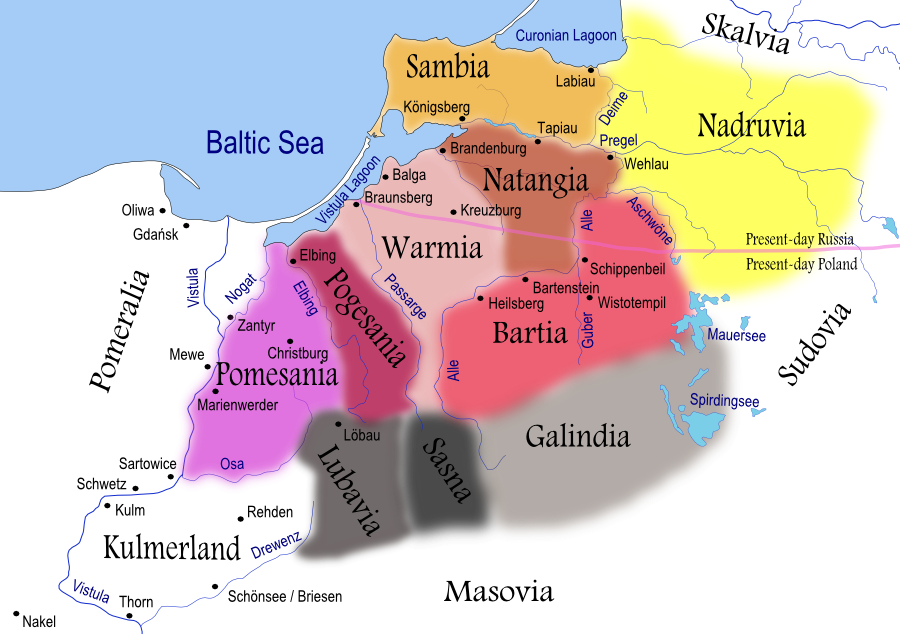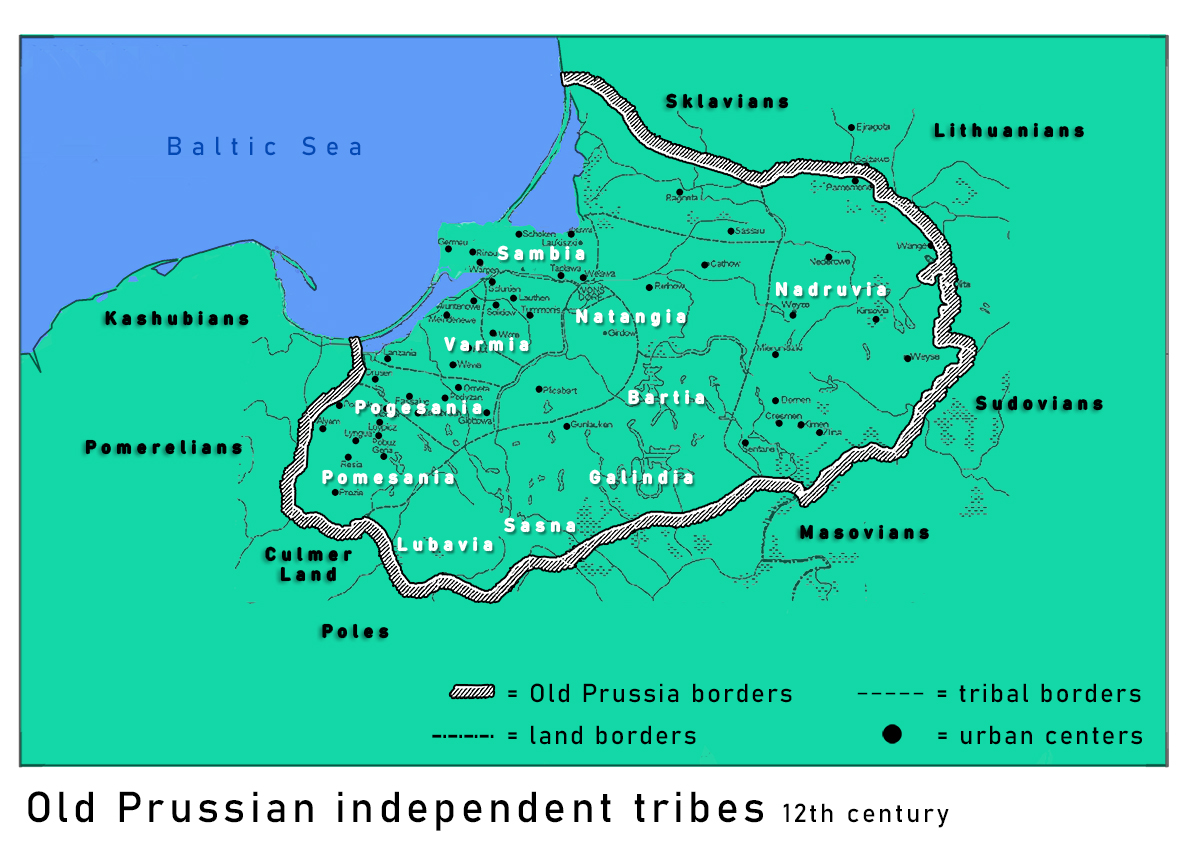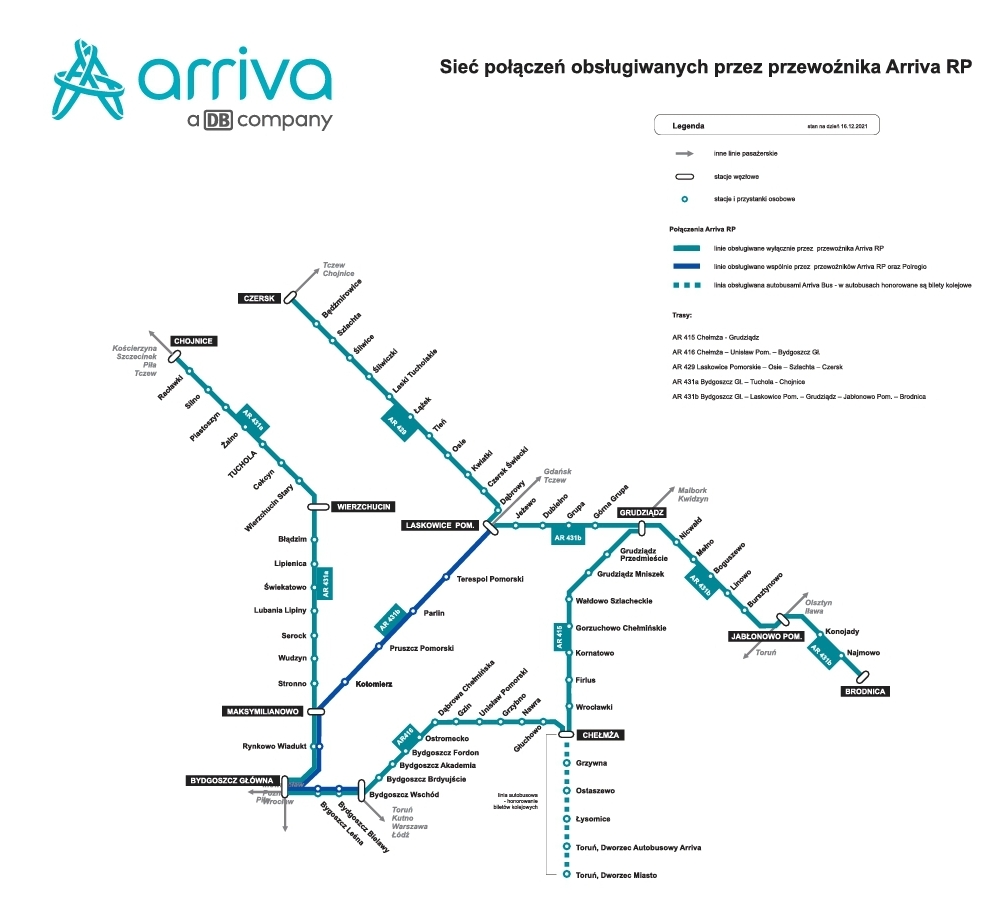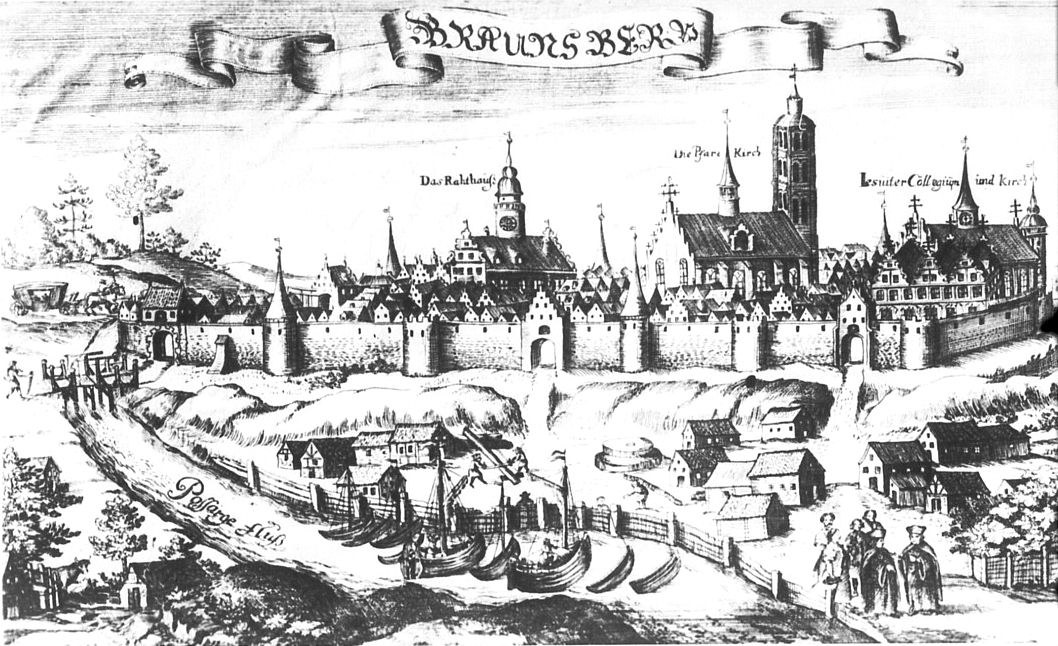|
Kadinen
Kadyny (german: Cadinen) is a village of Gmina Tolkmicko, within ElblńÖg County, Warmian-Masurian Voivodeship, in northern Poland. Geography It is situated in the ElblńÖg Upland Landscape Park, a protected area on a terminal moraine stretching along the Vistula Lagoon of the Baltic Coast. The BaŇľyŇĄski Oak in the village is one of the oldest trees in Poland. Kadyny lies approximately south-west of Tolkmicko, north of ElblńÖg, and north-west of the regional capital Olsztyn. It shares a border with the village of ŇĀńôcze to the south. The village has an approximate population of 600. Kadyny Station is a stop on the former Vistula Lagoon railway line (''Kolej Nadzalewowa'') from ElblńÖg to Braniewo, which is to be re-activated by the private Arriva RP rail carrier. The settlements KikoŇāy and Ostrog√≥ra are both considered part of Kadyny. History In the 11th-13th century a Baltic Prussian stronghold was located at the Klasztorna G√≥ra ("Monastery Hill"). The ''ter ... [...More Info...] [...Related Items...] OR: [Wikipedia] [Google] [Baidu] |
Countries Of The World
The following is a list providing an overview of sovereign states around the world with information on their status and recognition of their sovereignty. The 206 listed states can be divided into three categories based on membership within the United Nations System: 193 UN member states, 2 UN General Assembly non-member observer states, and 11 other states. The ''sovereignty dispute'' column indicates states having undisputed sovereignty (188 states, of which there are 187 UN member states and 1 UN General Assembly non-member observer state), states having disputed sovereignty (16 states, of which there are 6 UN member states, 1 UN General Assembly non-member observer state, and 9 de facto states), and states having a special political status (2 states, both in free association with New Zealand). Compiling a list such as this can be a complicated and controversial process, as there is no definition that is binding on all the members of the community of nations conc ... [...More Info...] [...Related Items...] OR: [Wikipedia] [Google] [Baidu] |
BaŇľyŇĄski Oak
The BaŇľyŇĄski Oak is an oak tree and natural monument in Poland. It is one of the oldest trees in Poland, whose age is estimated at around 716 years according to dendrochronological research.Cezary Pacyniak. ''Najstarsze drzewa w Polsce''. PTTK Kraj. 1992. It grows in the town of Kadyny on the Vistula Lagoon.Krzysztof Borkowski, Robert Tomusiak, PaweŇā ZarzyŇĄski. ''Drzewa Polski''. PWN. 2016. The circumference of the tree is 10.03 metres and its height is 21 metres. The crown spread is 14 by 21.5 m. The BaŇľyŇĄski Oak's circumference near the ground is exceptional ‚Äď around 15 metres.Robert Tomusiak, PaweŇā ZarzyŇĄski. ''90 drzew. Okazy niezwykŇāe''. Centrum Informacyjne Las√≥w PaŇĄstwowych. 2014. It is named after Jan BaŇľyŇĄski (also known as Johannes von Baysen), a former owner of Kadyny and one of the founders of the Prussian Confederation. In 1880 the oak's trunk was 8.64 metres thick and the radius of its crown was 13 metres; at the time its large hollow was fitted with ... [...More Info...] [...Related Items...] OR: [Wikipedia] [Google] [Baidu] |
Teutonic Knights
The Order of Brothers of the German House of Saint Mary in Jerusalem, commonly known as the Teutonic Order, is a Catholic religious institution founded as a military society in Acre, Kingdom of Jerusalem. It was formed to aid Christians on their pilgrimages to the Holy Land and to establish hospitals. Its members have commonly been known as the Teutonic Knights, having a small voluntary and mercenary military membership, serving as a crusading military order for the protection of Christians in the Holy Land and the Baltics during the Middle Ages. Purely religious since 1810, the Teutonic Order still confers limited honorary knighthoods. The Bailiwick of Utrecht of the Teutonic Order, a Protestant chivalric order, is descended from the same medieval military order and also continues to award knighthoods and perform charitable work. Name The name of the Order of Brothers of the German House of Saint Mary in Jerusalem is in german: Orden der Br√ľder vom Deutschen Haus der ... [...More Info...] [...Related Items...] OR: [Wikipedia] [Google] [Baidu] |
Old Prussian Language
Old Prussian was a Western Baltic language belonging to the Baltic branch of the Indo-European languages, which was once spoken by the Old Prussians, the Baltic peoples of the Prussian region. The language is called Old Prussian to avoid confusion with the German dialects of Low Prussian and High Prussian and with the adjective ''Prussian'' as it relates to the later German state. Old Prussian began to be written down in the Latin alphabet in about the 13th century, and a small amount of literature in the language survives. Classification and relation to other languages Old Prussian is an Indo-European language belonging to the Baltic branch. It is considered to be a Western Baltic language. Old Prussian was closely related to the other extinct Western Baltic languages, namely Sudovian, West Galindian and possibly Skalvian and Old Curonian. Other linguists consider Western Galindian and Skalvian to be Prussian dialects. It is related to the Eastern Baltic languages ... [...More Info...] [...Related Items...] OR: [Wikipedia] [Google] [Baidu] |
Prussia (region)
Prussia ( Old Prussian: ''PrŇęsa''; german: Preu√üen; lt, PrŇęsija; pl, Prusy; russian: –ü—Ä—É—Ā—Ā–ł—Ź, tr=Prussiya, ''/Prussia/Borussia'') is a historical region in Europe on the south-eastern coast of the Baltic Sea, that ranges from the Vistula delta in the west to the end of the Curonian Spit in the east and extends inland as far as Masuria. Tacitus's ''Germania'' (98 AD) is the oldest known record of an eyewitness account on the territory and its inhabitants. Pliny the Elder had already confirmed that the Romans had navigated into the waters beyond the ''Cimbric peninsula'' (Jutland). Suiones, Sitones, Goths and other Germanic people had temporarily settled to the east and west of the Vistula River during the Migration Period, adjacent to the Aesti, who lived further to the east. Overview The region's inhabitants of the Middle Ages have first been called ''Bruzi'' in the brief text of the Bavarian Geographer and since been referred to as Old Prussians, who, beg ... [...More Info...] [...Related Items...] OR: [Wikipedia] [Google] [Baidu] |
Old Prussians
Old Prussians, Baltic Prussians or simply Prussians ( Old Prussian: ''prŇęsai''; german: Pruzzen or ''Pru√üen''; la, Pruteni; lv, prŇęŇ°i; lt, prŇęsai; pl, Prusowie; csb, Pr√ęsowi√©) were an indigenous tribe among the Baltic peoples that inhabited the region of Prussia, at the south-eastern shore of the Baltic Sea between the Vistula Lagoon to the west and the Curonian Lagoon to the east. The Old Prussians, who spoke an Indo-European language now known as Old Prussian and worshipped pre-Christian deities, lent their name, despite very few commonalities, to the later, predominantly Low German-speaking inhabitants of the region. The duchy of the Polans under Mieszko I, which was the predecessor of the Kingdom of Poland, first attempted to conquer and baptize the Baltic tribes during the 10th century, but repeatedly encountered strong resistance. Not until the 13th century were the Old Prussians subjugated and their lands conquered by the Teutonic Order. The remainin ... [...More Info...] [...Related Items...] OR: [Wikipedia] [Google] [Baidu] |
Ostrogóra
Ostrog√≥ra (german: Scharffenberg) is a settlement part of the village of Kadyny, in the administrative district of Gmina Tolkmicko, within ElblńÖg County, Warmian-Masurian Voivodeship, in northern Poland. It lies approximately south-west of Tolkmicko, north of ElblńÖg, and north-west of the regional capital Olsztyn. From 1432 the settlement was owned by Jan BaŇľyŇĄski and was part of an estate centered in Kadyny.''Studium uwarunkowaŇĄ i kierunk√≥w zagospodarowania przestrzennego miasta i gminy Tolkmicko. Uwarunkowania strategii tr√≥jochrony krajobrazu'', 2014, p. 10 (in Polish) It was annexed by Prussia in the First Partition of Poland in 1772, and from 1871 to 1945 it also formed part of Germany (within the province of East Prussia), before it was restored to Poland after Nazi Germany's defeat in World War II World War II or the Second World War, often abbreviated as WWII or WW2, was a world war that lasted from 1939 to 1945. It involved the World War II by ... [...More Info...] [...Related Items...] OR: [Wikipedia] [Google] [Baidu] |
Kikoty
KikoŇāy is a settlement part of the village of Kadyny, in the administrative district of Gmina Tolkmicko, within ElblńÖg County, Warmian-Masurian Voivodeship, in northern Poland. It lies approximately south-west of Tolkmicko, north of ElblńÖg, and north-west of the regional capital Olsztyn. (KikoŇāy, not Kikoty). A watermill was erected in the settlement in 1347, it was repeatedly destroyed and rebuilt throughout history, and KikoŇāy developed into a land estate in the 18th century.''Studium uwarunkowaŇĄ i kierunk√≥w zagospodarowania przestrzennego miasta i gminy Tolkmicko. Uwarunkowania strategii tr√≥jochrony krajobrazu'', 2014, p. 64 (in Polish) After the First Partition of Poland in 1772 the settlement was annexed by Prussia, and the mill and estate were nationalized by the Prussians. From 1871 to 1945 it formed part of Germany (within the province of East Prussia), before it became part of Poland again after Nazi Germany's defeat in World War II. References KikoŇāy ... [...More Info...] [...Related Items...] OR: [Wikipedia] [Google] [Baidu] |
Arriva RP
Arriva Poland Sp. z o. o. is a Polish private rail carrier providing services in the Kuyavian-Pomeranian, Masovian, Pomeranian and Warmian-Masurian voivodships. It is a subsidiary of Arriva. History The company was founded in 2006 as Arriva PCC, as a 50/50 joint venture between Arriva and PCC Rail. In December 2007, Arriva PCC commenced a contract to operate all non-electrified passenger lines in the Kuyavian-Pomeranian Voivodeship. In June 2009, PCC Rail's share was included in its sale to Deutsche Bahn. In June 2010 Arriva bought Deutsche Bahn's shareholding and renamed the business Arriva RP. In December 2010 Arriva RP won a 10-year extension to its Kuyavian-Pomeranian Voivodeship contract. In December 2013 Arriva RP commenced operating trains on four electrified lines in the Kuyavian-Pomeranian Voivodeship for two years with 12 existing trains. In September 2017, Arriva RP secured some open access paths in Poland. [...More Info...] [...Related Items...] OR: [Wikipedia] [Google] [Baidu] |
Braniewo
Braniewo () (german: Braunsberg in Ostpreu√üen, la, Brunsberga, Old Prussian: ''Brus'', lt, PrŇęsa), is a town in northern Poland, in Warmia, in the Warmian-Masurian Voivodeship, with a population of 16,907 as of June 2021. It is the capital of Braniewo County. Braniewo is the second biggest city of Warmia after Olsztyn and one of the historical centers of the region. Location Braniewo lies on the PasŇāńôka River about 5 km from the Vistula Lagoon, about 35 km northeast of ElblńÖg and southwest of Kaliningrad ( pl, Kr√≥lewiec). The Polish border with Russia's Kaliningrad Oblast lies 6 km north, and may be reached from Braniewo via National road 54. History Middle Ages According to the German geographer Johann Friedrich Goldbeck (1748-1812), the town originally was named Brunsberg after Bruno von Schauenburg (1205‚Äď1281), bishop of Olomouc in Moravia, who accompanied King Ottokar II of Bohemia in 1254 and 1267 when the latter participated in the c ... [...More Info...] [...Related Items...] OR: [Wikipedia] [Google] [Baidu] |
ŇĀńôcze
ŇĀńôcze (german: Lenzen) is a village in the administrative district of Gmina Tolkmicko, within ElblńÖg County, Warmian-Masurian Voivodeship, in northern Poland. It lies approximately south-west of Tolkmicko, north of ElblńÖg, and north-west of the regional capital Olsztyn Olsztyn ( , ; german: Allenstein ; Old Prussian: ''AlnńĀsteini'' * Latin: ''Allenstenium'', ''Holstin'') is a city on the ŇĀyna River in northern Poland. It is the capital of the Warmian-Masurian Voivodeship, and is a city with county right .... The village has a population of 730. References Villages in ElblńÖg County {{ElblńÖg-geo-stub ... [...More Info...] [...Related Items...] OR: [Wikipedia] [Google] [Baidu] |






